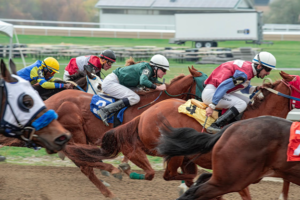
Inside the Rise of Online Horse Betting in 2025
Online horse betting surged in 2025, turning a classic trackside pastime into a fast, digital arena. Races now stream with rich stats, real-time angles, and tools that help viewers read form and conditions on the fly. Moreover, stronger rules and innovative betting platforms brought credibility and scale to the modern experience.
Letís learn more about what changed and how the modern bettor uses it.
The Digital Migration of the Racetrack
For decades, horse racingís appeal came from the live experience, with crowds cheering, trainers pacing, and jockeys weighing in. That thrill hasnít disappeared. Instead, itís evolved into something broader.
In 2025, online horse betting platforms replicate the intensity of the track with tools that let users analyze races, compare conditions, and follow horses across continents in real time. Whatís more, spectators can just look for a wide variety of trusted online horse betting sites and sign up for their preferred platform. From there, they can review the full race card and rules, and place a legal bet without leaving the stream.
Beyond a wide selection of platforms, online horse betting also boasts sophisticated online coverage. Viewers can jump between cards, compare conditions across countries, and follow horses through full seasons. Apparently, this migration has magnified the traditional essence of racing. Fans who once relied on secondhand reports now access direct feeds, transforming passive viewing into an active, data-driven experience.
Regulation Tightens and Legitimacy Expands
The legitimacy of online horse betting owes much to its regulatory evolution. In 2025, more regions have implemented unified rules for licensing, transparency, and consumer protection. This shift has given the online space credibility comparable to physical racetracks. Jurisdictions now require licensed operators to disclose race integrity data, adopt digital monitoring systems, and maintain responsible gaming protocols.
These changes took years of work from racing commissions, sports agencies, and independent auditors. Many platforms now use the same compliance systems to track patterns and block manipulation. Confidence replaces doubt, and partners from major racing bodies are more willing to connect. The result is a stable ecosystem that looks organized, supervised, and built to last.
The Role of Real-Time Data in Decision Making
If 2020s horse racing was about access, 2025 is about precision. Online bettors now navigate a landscape rich in real-time metrics, from sectional timing to stride analysis and course condition indicators. This shift toward granular data has elevated the experience into something resembling professional analytics rather than casual guessing.
Data-driven tools have changed how enthusiasts interpret form guides. Instead of static PDFs, interactive dashboards now show race simulations, speed maps, and historical track bias. Trainersí public comments, veterinary updates, and even horse transportation logs appear as part of race-day feeds. The modern bettor is no longer reacting to outcomes but forecasting them through patterns and context.
Whatís notable is how data literacy has become part of the culture. Serious players treat racing like a study of variables, like pace, distance, surface, and weather, all integrated into decision-making. This analytical approach has built a new generation of bettors who engage the sport strategically, not impulsively.
Globalization and the 24-Hour Racing Cycle
Another defining feature of 2025ís horse betting landscape is its global reach. The rise of integrated online platforms means that bettors can follow events from Tokyo in the morning, London by afternoon, and New York by night. The sport no longer follows local schedules, operating instead on a 24-hour global cycle.
This international access has diversified how players think about racing. Regional styles shape how people play. European turf favors stamina and late moves, North American tracks reward sharp breaks and pace, while many Asian circuits blend the two. Seeing these contrasts live helps bettors adjust reads and spot angles in real time.
Furthermore, cross-market broadcasting has allowed trainers, jockeys, and analysts to build worldwide followings. Fans who once supported a local stable now track entire racing circuits across continents. This interconnected view of the sport keeps engagement consistent around the clock, blending tradition with a modern sense of accessibility.
Technology and the Interactive Edge
Todayís interfaces are built for action, letting viewers switch between live stats, replay angles, and expert commentary without leaving the race screen. Phones stay in sync with desktops, so mid-race data travels with the user and decisions never feel delayed.
Moreover, live chats and community threads transform solo viewing into a lively conversation, where bettors share insights on track bias, rider tactics, and late scratches. What once thrived in the grandstand now lives on in real-time online, with the discussion keeping pace with the race clock.
Streaming quality has become a real edge. Operators chase faster loads and steadier feeds because even a short lag can alter the reading. That focus on speed and stability pulls in longtime racing fans and newer viewers alike. The result is an immersive experience that carries the rush of the track without the travel.
A New Kind of Finish Line
The racetrack still brings the same thrill. The only difference is where people watch it. Screens replaced stands, but the excitement never left. Moreover, races now run around the clock, and the community talks in real time, which keeps the sport active and honest. The track moved online, making the game more transparent, faster, and easier to follow. So, moving forward, letís see how far this version of online horse betting can go.

